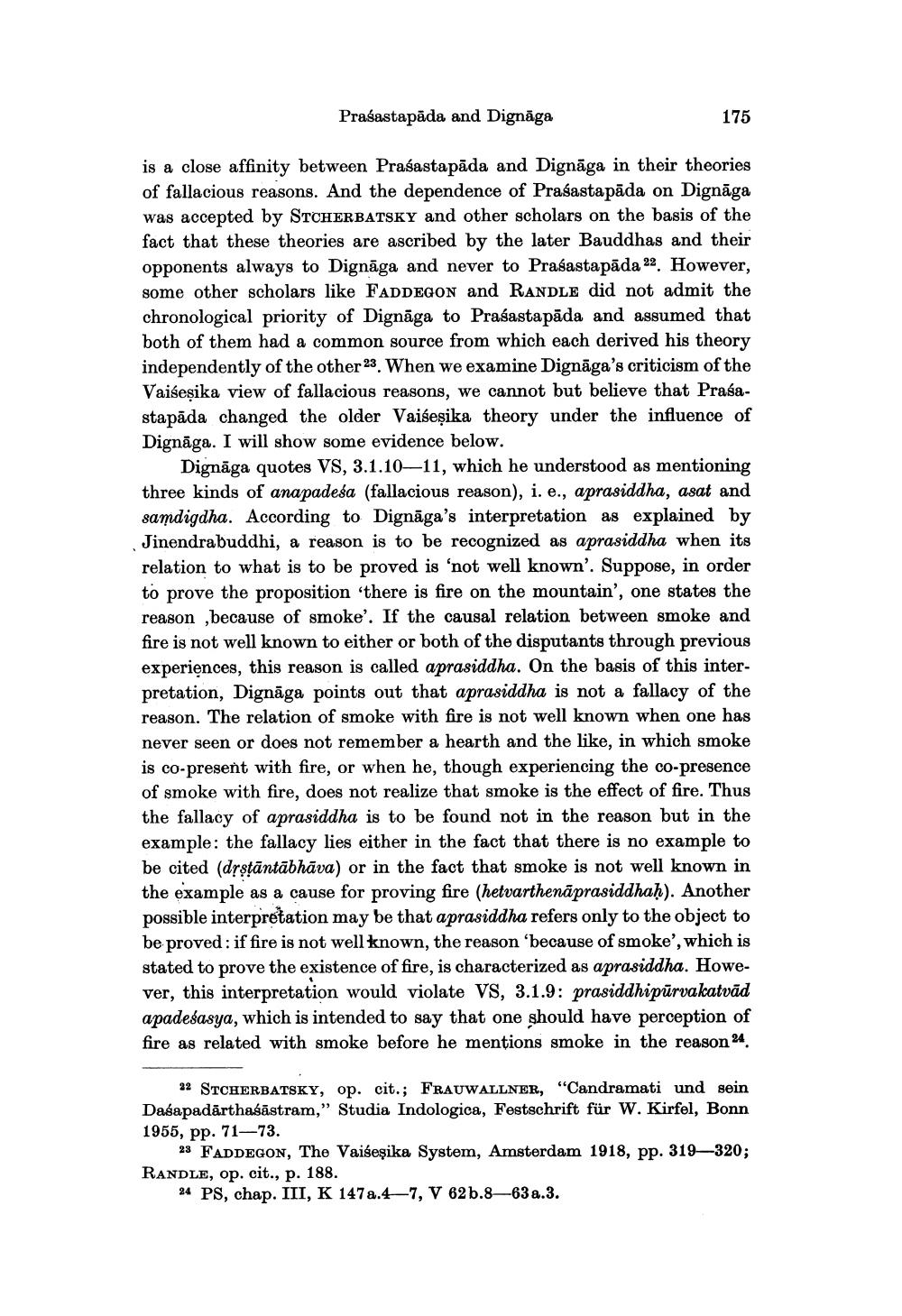Book Title: Note On Development Of Vaisesika Theory Of Anumana Author(s): Masaaki Hattori Publisher: Masaaki Hattori View full book textPage 7
________________ Prasastapāda and Dignaga is a close affinity between Prasastapāda and Dignaga in their theories of fallacious reasons. And the dependence of Prasastapāda on Dignāga was accepted by STCHERBATSKY and other scholars on the basis of the fact that these theories are ascribed by the later Bauddhas and their opponents always to Dignaga and never to Prasastapāda 22. However, some other scholars like FADDEGON and RANDLE did not admit the chronological priority of Dignaga to Prasastapāda and assumed that both of them had a common source from which each derived his theory independently of the other 23. When we examine Dignaga's criticism of the Vaiseṣika view of fallacious reasons, we cannot but believe that Prasastapada changed the older Vaiseṣika theory under the influence of Dignaga. I will show some evidence below. Dignaga quotes VS, 3.1.10-11, which he understood as mentioning three kinds of anapadesa (fallacious reason), i. e., aprasiddha, asat and samdigdha. According to Dignaga's interpretation as explained by Jinendrabuddhi, a reason is to be recognized as aprasiddha when its relation to what is to be proved is 'not well known'. Suppose, in order to prove the proposition 'there is fire on the mountain', one states the reason because of smoke'. If the causal relation between smoke and fire is not well known to either or both of the disputants through previous experiences, this reason is called aprasiddha. On the basis of this interpretation, Dignaga points out that aprasiddha is not a fallacy of the reason. The relation of smoke with fire is not well known when one has never seen or does not remember a hearth and the like, in which smoke is co-present with fire, or when he, though experiencing the co-presence of smoke with fire, does not realize that smoke is the effect of fire. Thus the fallacy of aprasiddha is to be found not in the reason but in the example: the fallacy lies either in the fact that there is no example to be cited (dṛṣṭāntābhāva) or in the fact that smoke is not well known in the example as a cause for proving fire (hetvarthenaprasiddhaḥ). Another possible interpretation may be that aprasiddha refers only to the object to be proved: if fire is not well known, the reason 'because of smoke', which is stated to prove the existence of fire, is characterized as aprasiddha. However, this interpretation would violate VS, 3.1.9: prasiddhipūrvakatvād apadeśasya, which is intended to say that one should have perception of fire as related with smoke before he mentions smoke in the reason 24. 175 22 STCHERBATSKY, op. cit.; FRAUWALLNER, "Candramati und sein Daśapadarthaśāstram," Studia Indologica, Festschrift für W. Kirfel, Bonn 1955, pp. 71-73. 23 FADDEGON, The Vaiśeşika System, Amsterdam 1918, pp. 319-320; RANDLE, op. cit., p. 188. 24 PS, chap. III, K 1478.4-7, V 62b.8-63a.3.Page Navigation
1 ... 5 6 7 8 9 10 11 12
